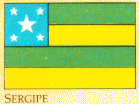|
Flags Of Brazil
Brazil is officially named as: Republica Federation do Brasil. As we have already established, the Brazil Flag was formally adopted in 1889, after Brazil was declared a republic.
Each of the twenty seven stars in the flag of Brazil represents each one of Brazil's Districts or regions and its Federal State. Here are a few of the Brazilian flags that represent some of these regions/state; all of which come under the national brazilian flag.
The Alagoas Flag
The Alagoas flag of Brazil has Maceió as its capital. The flag has no motto, however the colors blue and red, along with white have traditional uses in popular song celebrations, plays,
dance and drama by Brazilians in the northeast
The Bahia Flag
The Capital of Bahia is Salvador. The Bahian flag of Brazil stands for libertarianism and is the same as the flag used by Bahian revolutionaries of 1798
The Ceara Flag
The Maranhao Flag
The Paraiba Flag
The Pernambuco Flag
The flag of Pernambuco, of which the capital is Recife was in
existence way before the independence of Brazil. It is representative of the events surrounding the Pernambucan Revolution of 1817
The Flag of Sergipe
The flag of Sergipe - of which the capital is Aracajú came about from an initial suggestion of a merchant-seaman, Jose Rodrigues Bastos Coelho. He came up with an emblem for his vessels that would clearly identify his state of origin.
Now, when you travel brazil north east coast, you have a better awareness of the significance, meaning and importance of the various flags of Brazil and its history.
Return From Flags Of Brazil To Brazil Travel North East Home Page |







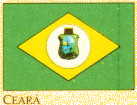 The capital of Ceara is Fortaleza. The Ceara flag came into
existence in 1922, by decree of the President of the State, Justiniano de Serpaon
The capital of Ceara is Fortaleza. The Ceara flag came into
existence in 1922, by decree of the President of the State, Justiniano de Serpaon  The capital of Maranhao is Sao Luis. The flag came into existence by decree in 1889 and is said to represent the racial fusion of the Brazilian ethnic groups
The capital of Maranhao is Sao Luis. The flag came into existence by decree in 1889 and is said to represent the racial fusion of the Brazilian ethnic groups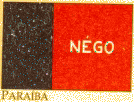 The flag of Paraíba, of which the capital is Joa Pessoa, is said to honor the political events surrounding João Pessoa, his assassination and the mourning of of the State; the Liberal Alliance Party; the Revolution of 1930 and its victorious outcome
The flag of Paraíba, of which the capital is Joa Pessoa, is said to honor the political events surrounding João Pessoa, his assassination and the mourning of of the State; the Liberal Alliance Party; the Revolution of 1930 and its victorious outcome 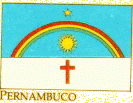
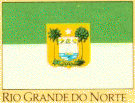 The flag of Rio Grande do Norte - of which the capital is Natal,
lawfully came into existence in 1957
The flag of Rio Grande do Norte - of which the capital is Natal,
lawfully came into existence in 1957